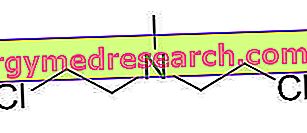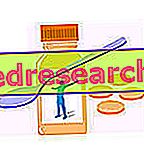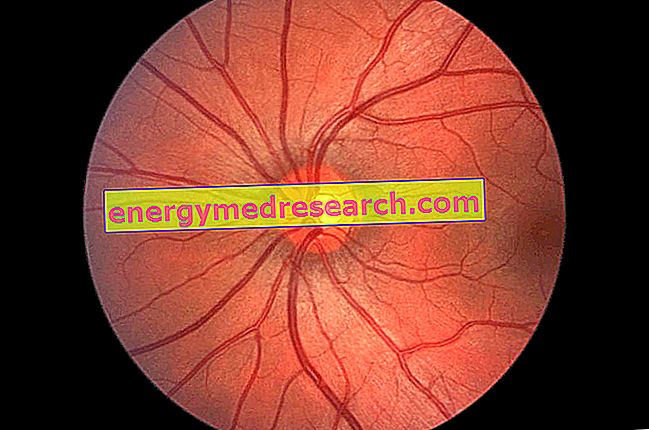Generality
Introduction: the meat in the viewfinder
Always a symbol of economic well-being in the food sector, in recent years the meat has been going through a period, just to stay on the subject, of "lean cows". It is the fault of a society that is increasingly afflicted by overweight and cholesterol, in which the ghosts of mad cow disease, bird flu, animal meal and oestrogens flutter.

Benefits
What are the nutritional benefits of meat?
Leaving aside ethical and philosophical considerations, let's briefly analyze the importance of meat for human health and nutrition.
Meat and protein
The meat, although in the variability due to the species, the cuts and the characteristics of the considered animal, is a protein source with a high biological value; this means that its proteins are very similar to human ones (by type, quantity and ratio of essential amino acids) and are therefore perfectly usable by the body to satisfy the various metabolic processes in which they are required (production of hormones, enzymes, neurotransmitters, antibodies, cell renewal, blood coagulation, muscle contraction, etc.).
Meat proteins VS vegetable proteins
In vegetable proteins, unlike those contained in meat, the degree of similarity with human peptides is lower; this means that when the diet is focused exclusively on these foods (eg in the vegan or raw food diet) the risk of specific nutritional deficiencies increases, especially if you do not pay much attention to the type of protein sources consumed and neglect of food supplementation with essential amino acids.
It is however necessary to specify that, compared to the past, today we know many plant foods with a superior amino acid pool. The most indicative examples are soy and derivatives, certain algae and the association between the various seeds (cereals, legumes, pseudocereals, oil seeds, etc.). However, according to nutritionists, even using these products it is not possible to completely replace food of animal origin.
Cheeses and eggs as meat substitutes
The situation changes radically if we pass from the absolute prohibition of consuming animal foods and their derivatives to that of avoiding only meat and fish (vegetarian diet).
Eggs, milk and derivatives are in fact able to fill, without too many problems, the deficiencies due to the removal of meat and fish from the daily food plan.
Meat and minerals
The meat has an excellent mineral content. The most important, because characteristic, is the iron (which we will discuss in the next paragraph), but it also does not disappoint the levels (especially in the offal) of: potassium, sodium, phosphorus, zinc and selenium.
Meat and iron
One of the points in favor of meat is inherent in its excellent iron content, much higher than that of food of vegetable origin; this difference is also registered at a qualitative level, since with the same amount of iron taken, that of animal origin is absorbed in clearly higher proportions (about 3 times greater) compared to plants. This is due to the chemical nature of the mineral which, in meat and fish, is mainly found in the EME form, therefore highly bioavailable; on the contrary, in vegetables, iron is present almost exclusively as a trivalent ion (Fe +++), which is not soluble and therefore not bioavailable.
Type | Protein (G) | Lipids (G) | Calories (Kcal) | Iron (Mg) | Cholesterol (Mg) |
| Fresh meat | |||||
| Domestic duck | 21.4 | 8.2 | 159 | 1.3 | |
| Adult cow (loin) | 21.8 | 5.2 | 134 | 1.4 | 52-72 |
| Calf | 20.7 | 1.0 | 107 | 2.3 | 71 |
| Light pork (loin) | 20.7 | 7.0 | 146 | 1.3 | 62 |
| Heavy pig (loin) | 20.8 | 9.9 | 172 | 1.4 | 88 |
| Whole rabbit | 19.9 | 4.3 | 118 | 1.0 | 52 |
| Lamb (muscle) | 20.8 | 8.8 | 159 | 1.7 | 70 |
| Chicken (breast) | 23.3 | 0.8 | 100 | 0.4 | 60 |
| Chicken (melted with skin) | 18.4 | 5.7 | 125 | 0.7 | 94 |
| Chicken (skinless melted) | 18.5 | 3.7 | 107 | 1 | 88 |
| Turkey (topless without skin) | 18.0 | 4.6 | 107 | 0.8 | 67 |
| Cured meat | 18.0 | ||||
| Bresaola | 32.0 | 2.6 | 151 | 2.4 | 67 |
| Mortadella | 14.7 | 28.1 | 317 | 1.4 | 70 |
| Baked ham | 19.8 | 14.7 | 215 | 0.7 | 62 |
| Boneless raw ham | 26.9 | 12.9 | 224 | 0.7 | 72 |
| Milan salami | 26.7 | 31.1 | 392 | 1.5 | 90 |
| Fresh pork sausage | 15.4 | 26.7 | 304 | 2.8 | 85 |
| Speck | 28.3 | 20.9 | 303 | 1.6 | 90 |
| Frankfurters | 13.7 | 23.3 | 270 | 1.2 | 62 |
Meat and vitamins
The vitamin content of the meat is quite specific. B vitamins (especially B12, B6 and B1) abound, but those with antioxidant properties typical of fruit and vegetables (carotenoids, vitamin C, vitamin E) are scarce.
In some fatty cuts and offal there are important quantities of certain fat-soluble vitamins and especially of vitamin A, vitamin D and vitamin K; to a lesser extent than vitamin E.
Meat and vitamin B12
Meat, especially beef and in particular the animal's liver, is an excellent source of vitamin B12, which we recall is essential for the synthesis of nucleic acids, and therefore of red blood cells and nervous tissue.
Even with regard to this vitamin, in the plant world we do not find foods capable of compensating for this specific nutritional quality of meat.
Conclusions
The high protein content, capable among other things of stimulating the secretion of growth hormone (somatotropin or GH), associated with the richness of iron and vitamin B12, contributes to making meat a food of primary importance in the nutrition of sportsmen, children, teens, anemics and pregnant women.
Lipids
Lipids of meat
Negative aspects of fatty acids in meat
The painful notes, so to speak, begin when we start talking about meat and lipids. Although with extreme variability due to the species, the type of muscle, age, breeding and feeding of the animal, the meat contains significant amounts of triglycerides.
The nutritional characteristics of the most lipid-rich cuts of meat, in addition to raising their caloric and sometimes atherogenic power (if rich in saturated fatty acids and cholesterol), also contribute to reducing their digestibility.
Cholesterol of meat

Now let's see some tips to reduce the cholesterol content of animal foods:
- Eliminate visible fat, including chicken and turkey skin. The combination of saturated fats and cholesterol favors the latter's atherogenic action. This is why white meat, although containing similar amounts of cholesterol compared to red, is more suitable for those suffering from hypercholesterolemia.
- Avoid preparing meat using seasoning fats; among the various cooking methods the ideal is the boiled meat, followed by grilling (as long as you are careful not to burn it).
- Reduce the consumption of fat offal, especially of brains, food in which cholesterol concentrations are reached above 2 grams / 100 grams (when the total daily requirement is only 0.3 grams).
Finally, we must not forget that the greatest dangers to health are registered when high amounts of cholesterol and triglycerides are combined with a caloric surplus. So, a sausage combined with a nice plate of pasta is not only more palatable, but also more "dangerous" than a sausage combined with vegetables and 50 grams of bread. For the same reason, sportsmen and all those who work hard, can afford to consume some cuts of fat meat more than sedentary ones.
Positive aspects of the lipid content of meat
In defense of this food, it must be said that:
- The total fat intake varies according to the animal species and the cut; there are very fatty meats, such as the belly of pigs and cattle, and very lean meats such as the breasts of birds and cocoole meats.
- The saturated fat content is on average lower than that of cheese
- The concentration of cholesterol is overlapping or slightly lower than the milk derivatives, but extremely lower than that of eggs.
Conclusions
To conclude, the lipid profile of the meat cannot be restricted to a single description. There is too great a variability between the various products and for this reason it is advisable to favor those with less lipids, with a lower percentage of saturated fats and cholesterol.
Calories
Is meat a calorie or diet food?
Another nutritional value, which is particularly interesting for those who want to keep fit, is the "potentially moderate" caloric intake, supplied mainly by proteins. In fact, meat is a food free of carbohydrates (instead abundantly present in cereals and to a lesser extent in fruit, vegetables and milk) and with a variable lipid content.
The leanest animal species or cuts of meat (for example chicken or turkey breast, rabbit, horse, veal, game meat, etc.) have a lipid content of very few grams (even less than 1 g / 100 g) and a relative calorific value that is just over 100 kcal / 100 g.
Meat recipes
Many healthy, light and tasty meat-based dishes. Visit the sections: First courses of meat and Second courses of meat
Roast Beef in my own way
X Problems with video playback? Reload from YouTube Go to Video Page Go to Video Recipes Section Watch the video on youtube



